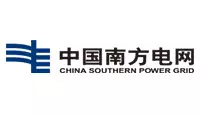
What is a certified fall arrest harness?
A certified fall-at-height harness (often referred to as a ‘safety belt’ or ‘fall arrest system’) is personal protective equipment (PPE) that is used to protect workers at height from falling accidents at work. To ensure safety, the harness must comply with specific national or international safety standards and be of good design and quality to effectively disperse the impact and protect the worker in the event of a fall.
Qualified fall-at-height harnesses usually have the following characteristics:
1. Compliance with national or international standardsIn China, qualified fall-at-height safety belts should comply with relevant standards such as GB 6095-2009 ‘Labour Protection Products Safety Belt for Working at Height’ or international standards such as EN 361 (European Standard).
These standards specify the design, material, durability, load capacity and other requirements of the harness.
2. Material requirementsThe main material of the safety belt is usually made of high strength polyester fibre or nylon with high tensile strength and abrasion resistance.
The waist belt and shoulder belt should be made of strong and comfortable material to avoid discomfort during long time use.
3. Design requirementsMulti-point fixation design: Qualified harnesses should generally have multiple fixation points (e.g. back, chest, etc.) in order to reasonably distribute the impact force during a fall.
Connection device: The fasteners and connecting rings of the harness should have sufficient strength and durability to ensure that they can be firmly connected to the safety rope or fixing point during work at height.
4. Impact resistanceThe harness must be able to withstand the strong impact of a fall from height, and is usually designed to withstand a force of at least 15kN (kilonewtons) or more, which effectively reduces impact injuries to the human body in the event of a fall.
In addition, the harness should have a cushioning system (e.g. impact cushion, energy absorber, etc.) to reduce the impact of the fall.
5. Comfort and adjustabilityQualified fall arrest harnesses should be comfortable to wear for long periods of time without discomfort.
Harnesses usually have multiple adjustments to suit different sizes of people to ensure that they fit the user and provide optimal protection.
6. Regular inspection and maintenanceQualified seat belts should also be detectable. Users need to check regularly for wear and tear, the integrity of the connecting parts, and any breakage or deterioration of the belt.
Once any breakage, corrosion, deformation, etc. is found, it must be stopped and replaced immediately.
7. Use of environmental requirementsQualified safety belts also need to consider the special characteristics of the use environment, such as whether waterproof, corrosion-resistant, whether it can withstand extreme temperatures.
8. Other additional functionsSome working-at-height safety belts may be equipped with additional safety features, such as double safety buckles, reverse tension ropes or emergency rescue devices, to increase operational safety.
SummaryQualified fall-at-height safety harnesses should not only meet stringent safety standards, but also provide durability, comfort and adaptability to ensure effective protection for workers during work-at-height operations. When selecting and using a safety harness, it is important to pay attention to the certification marks, material quality and design standards of the product to ensure that it meets the requirements of the relevant regulations and standards and reduces the risk of fall accidents.












